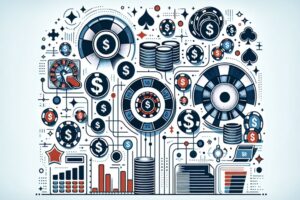What is a Share Buyback, and Why Do Companies Use Them?

Essentially, a share buyback, also known as a stock repurchase, occurs when a company decides to reacquire its own shares from the marketplace. This move can increase the share value of the remaining outstanding shares because there are fewer shares available on the market, and it can often be interpreted as the company having confidence in its current and future financial health.
What is Share Buyback?
A share buyback involves a company purchasing its own stock from its shareholders at the current market price. This transaction reduces the total number of shares outstanding, effectively consolidating ownership and potentially enhancing the share value. Buybacks can be conducted via the open market or through a direct offer to existing shareholders.
Companies engage in buybacks for several strategic reasons. Primarily, it is a way to return wealth to shareholders, similar to dividends but with advantageous tax implications in certain jurisdictions. By reducing the number of shares outstanding, a buyback increases the earnings per share (EPS) ratio, which can elevate the company’s share price. Additionally, buybacks often signal to the financial markets that the company believes its stock is undervalued, serving as a robust vote of confidence from the management in the company’s prospects.
Reasons for Share Buybacks

Boosting Shareholder Value
One of the core reasons companies choose to buy back their own shares is to boost shareholder value. This process directly impacts the stock price by reducing the number of shares outstanding, which can lead to a higher EPS. For instance, if a company earns $1 million in profit and has 1 million shares outstanding, its EPS is $1. However, if it buys back 200,000 shares, leaving 800,000 shares outstanding, the EPS rises to $1.25, assuming the profit remains constant.
Financial Strategies
Buybacks serve as a strategic tool within broader corporate financial strategies, helping manage the capital structure. Companies with excess cash might opt for a buyback to allocate their resources more effectively, often leading to a better return on equity. Moreover, buybacks can be used to adjust the company’s debt-to-equity ratio, which is a crucial indicator of financial health that credit rating agencies and investors closely monitor.
Types of Share Buybacks
Share buybacks can be categorized primarily into two types, each with distinct procedures and implications for shareholders.
On-Market Buybacks
On-market buybacks are conducted on the stock exchange where the company’s shares are listed. In this scenario, the company buys its own stock just like any other investor would, through the open market during trading hours. This process is generally straightforward and is perceived as a transparent way to return capital to shareholders. The market price paid for these shares is the same as any other investor would pay at that time.
Off-Market Buybacks
Off-market buybacks, on the other hand, can be structured in a couple of ways:
- Equal Access Buybacks: This method ensures all shareholders are treated equally, offering them the chance to sell back a proportionate part of their shares at a specified price. This price often includes a premium to the current market value to make the offer more attractive.
- Selective Buybacks: These are targeted at specific shareholders, who might be institutional investors or large private equity stakeholders. Selective buybacks require shareholder approval, typically through a special resolution, and are not offered to all shareholders.
Both types of off-market buybacks may include different terms and might be structured to include a mix of cash and other considerations, which can complicate the tax implications.
Financial Implications of Buybacks
Impact on Earnings Per Share (EPS)
One of the most direct impacts of a share buyback is on the company’s EPS. A reduced count of shares outstanding means that the same amount of earnings is spread over fewer shares, boosting the EPS. This increase can make the company appear more profitable on a per-share basis, enhancing its attractiveness to investors.
Tax Considerations
Tax implications of buybacks can vary significantly between on-market and off-market transactions:
- Capital Gains: Shareholders participating in buybacks might incur capital gains tax if the shares are sold for more than their cost basis. In on-market buybacks, this is typically straightforward as the capital gain is determined by the difference between the purchase and selling price.
- Off-Market Buybacks: These often come with complex tax consequences because they can include a dividend component or be executed at a premium to the market price. Shareholders may need to navigate specific tax rules, potentially affecting their decision on whether to participate.
Strategic Reasons for Buybacks
One of the most compelling reasons for a company to initiate a buyback is the belief that its shares are undervalued. When a company’s leadership feels that the market value does not reflect the true intrinsic value of the company, buying back shares can be a signal to the market that the current stock price is a bargain. This action can also prepare the ground for stock price appreciation as the market corrects the undervaluation.
Buybacks are also used as a strategic lever to adjust the capital structure. By purchasing its own shares, a company can effectively shift the balance between equity and debt. This is particularly useful for adjusting the company’s debt obligations and improving financial metrics like return on equity (ROE), which can enhance its credit standing and attractiveness to investors.
Companies with excess cash reserves face the challenge of effectively deploying these funds. Engaging in share buybacks offers a route to use this excess cash in a way that benefits existing shareholders, especially when alternative investment opportunities may not yield as high a return. This strategy is often more shareholder-friendly compared to holding large cash reserves which can be seen as inefficient capital management.
Examples
The tangible effects of buybacks on stock prices and market perception:
Large-Scale Corporate Buybacks
Major companies, like Apple and Alphabet, have executed large-scale buybacks. For instance, Apple’s aggressive buyback program has been a significant factor in its stock performance, increasing its share price by reducing shares outstanding and demonstrating confidence in its future profitability. This not only rewards existing shareholders but also enhances the perceived financial health of the company.
Impact of Buybacks on Stock Prices and Market Perception
Buybacks generally lead to an immediate increase in stock prices, driven by the reduced supply of shares and the signaling effect that the company believes its stock is undervalued. Over the long term, this can also improve market perception of the company, as it shows a commitment to returning value to shareholders and maintaining a disciplined approach to capital management.
Pros and Cons of Share Buybacks
Exploring the advantages and disadvantages of share buybacks provides a balanced view of this financial strategy, helping you understand the implications for both companies and shareholders.
Advantages
- Potential to increase stock price: By reducing the number of shares outstanding, buybacks typically boost the share price due to the increased earnings per share (EPS) and reduced supply.
- Flexibility compared to dividends: Unlike dividends, which represent a commitment to regular payouts, buybacks offer companies a flexible method of returning capital to shareholders. Companies can choose when and how much stock to repurchase based on their current financial situation and market conditions.
Disadvantages
- Perception of no growth opportunities: Sometimes, buybacks can signal to the market that a company lacks viable investment opportunities to grow its business, which might discourage investors looking for growth.
- Risk of increasing debt levels or reducing cash reserves: Companies that finance buybacks through debt or by depleting cash reserves may face increased financial risk, especially if the economic conditions deteriorate.
Shareholder Considerations
When a company announces a buyback, shareholders must weigh several factors before deciding whether to participate.
When to Participate in Buybacks
- Offer price relative to market value: Shareholders should assess whether the buyback offer provides a financially attractive exit price compared to the current market value of the shares.
- Tax implications: The method of the buyback—whether on-market or off-market—can have different tax implications, such as capital gains tax or the treatment of dividends, which need to be considered.
- Views on the company’s future prospects: If you believe the company has strong future potential, it might be better to hold onto your shares rather than sell them back in a buyback.
The Decision-Making Process
- Individual financial goals and investment strategies: Each shareholder’s decision to participate in a buyback should align with their broader financial goals and investment strategies. This includes considering the timing of potential capital gains and their current and future tax situations.
- Company’s reasons for the buyback: Understanding why the company is conducting a buyback can provide insights into its financial health and strategic direction. For example, a buyback primarily funded through debt might raise concerns about the company’s long-term financial stability.
Regulatory and Procedural Aspects of Share Buybacks
Share buybacks are regulated to protect investor interests and maintain market integrity. In many jurisdictions, regulatory bodies such as the Securities and Exchange Commission (SEC) in the U.S. or the Australian Securities and Investments Commission (ASIC) oversee these transactions. Regulations ensure that buybacks are conducted transparently and fairly, preventing market manipulation and protecting minority shareholders.
Regulatory oversight: Regulators require companies to disclose detailed information about buyback plans, including the timing, price, and number of shares to be repurchased, ensuring that all market participants are well-informed.
Legal requirements: Companies must adhere to specific legal requirements that vary by country. For example, buybacks may be subject to limits on the percentage of outstanding shares that can be repurchased within a certain period or require shareholder approval during an annual general meeting.
Forms and Notifications
Proper documentation is essential for executing buybacks within regulatory frameworks. Companies must file various forms and notifications with regulatory bodies:
- Announcement obligations: Companies must publicly announce their buyback plans, detailing the scope and nature of the buyback to ensure transparency.
- Filing requirements: Specific forms must be filed with the relevant financial authority before, during, and after the buyback process. Depending on whether the buyback falls under the 10/12 rule, different forms may be required:
-
-
- Notice of intention to carry out a share buy-back (Form 281): This needs to be lodged with ASIC at least 14 days before the buyback if it doesn’t require lodging buyback documents (e.g., employee or on-market buybacks under the 10/12 limit).
- Form 208 (notification of share buy-back details): In most cases, this form needs to be lodged with ASIC before sending the buyback notice and documents to shareholders. It details the proposed share buyback.
-
Regardless of the specific form, all buybacks require notifying ASIC about the cancellation of the repurchased shares using Form 484
- Post-buyback compliance: After the completion of a buyback, companies are required to update their capital structure information and report how the buyback has affected their financial ratios and overall financial situation.
These regulatory procedures ensure that buybacks are executed under stringent guidelines to protect both the companies and the existing shareholders, maintaining the overall health and fairness of the financial markets.
By understanding the comprehensive regulatory and procedural environment surrounding stock buyback, companies can effectively plan and execute buybacks, while shareholders can make informed decisions based on thorough disclosures and compliant practices.
FAQs
What is a buyback of shares?
A buyback of shares occurs when a company repurchases its own stock, reducing the total share capital available, which can help consolidate ownership and boost shareholder returns.
How do stock buybacks enhance shareholder value?
Share buyback program reduce the total number of shares outstanding, which can increase the share price and earnings per share (EPS), directly enhancing shareholder value.
What is the difference between an on-market buyback and an off-market buyback?
An on-market buyback involves a company purchasing its shares through the stock exchange, while an off-market buyback is conducted directly with shareholders, often at a specified price.
What are the financial effects of companies buying back their stock?
When companies buy back their stock, it can lead to a higher share price by reducing the supply of remaining shares. This practice often reflects positively on the company’s ratio of debt to equity and enhances future performance metrics.
How does repurchasing shares impact a company’s tax return?
The company purchases of shares can affect both the company’s and the shareholders’ tax returns, especially if the buyback offers capital gains or involves complex tax considerations.
What is an accelerated share repurchase?
An accelerated share repurchase (ASR) is a fast-track method where a company quickly buys back its shares using investment bank services to immediately impact its share repurchase metrics.
Why would a company announce a stock repurchase?
A stock repurchase announcement is often made when a company believes its share prices are undervalued. This move reassures investors of the company’s confidence in its past performance and future outlook, aiming to repurchase shares to manage share value effectively.
What are the Best ASX Stocks to invest in right now?
Check our buy/sell tips
Recent Posts
Can AI predict future stock returns?
Artificial intelligence can outperform human analysts. Used together, humans and AI are particularly difficult to beat. Machine learning is a…
ASX Casino Stock Investment Analysis Guide
Investing in ASX-listed casino stocks demands a unique blend of market analysis and sector-specific insight. It is a high-stakes game…



